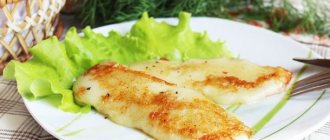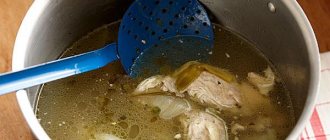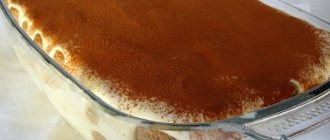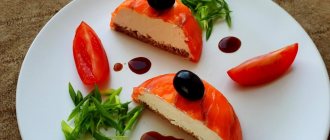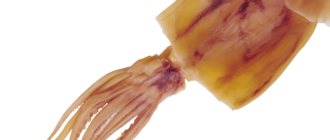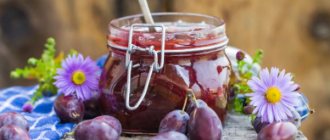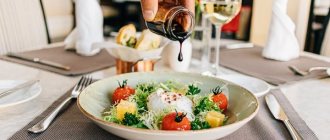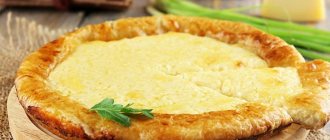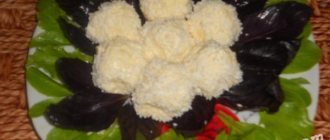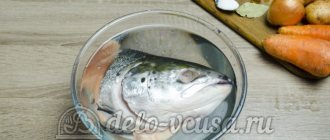Large holes and a sweetish-nutty taste are what distinguishes Maasdam from other types of cheese. Today, this type of Dutch cheese is the most popular along with Gouda and Edam.
To make Maasdam cheese, almost the same ingredients are used as for the production of expensive Swiss cheese. They taste very similar, however, maasdam has a softer and more delicate structure, which is explained by the higher moisture content of the product.
Preparations:
Pour milk into a saucepan and heat to 33C, stirring occasionally to prevent the milk from burning. Remove from heat.
Sprinkle thermophilic starter and propionic bacteria onto the surface of the milk and let stand for 2 minutes to allow the starters to absorb moisture.
Stir the entire volume of milk with a large slotted spoon for 2 minutes.
Cover and leave for 30 minutes for bacteria to grow.
Dissolve calcium chloride in 50 ml of water. Pour the solution into the milk.
Dissolve the rennet in 50 ml of water and pour into the milk. Mix everything with smooth movements using a slotted spoon.
Cover with a lid or towel and leave for 40 minutes to form a curd.
Check clot formation. Clean separation of the curd from the whey must be achieved. If necessary, let sit for another 10-15 minutes to form a tight curd. Using a large whisk or knife, cut the curd into 1cm cubes.
After the entire curd is cut, slowly stir the mixture for 30 minutes. Leave for 10 minutes so that the cheese grains settle to the bottom.
Remove 5 liters of whey (~30%). Pour the same amount (5 liters) of hot water at a temperature of 60C into the pan. Stir and slowly heat the mixture to 45C for 30 minutes.
Leave for 10 minutes so that the cheese grains settle to the bottom.
Pour the whey through the cheese pan until it warms up. Line the mold with a drainage bag or gauze. Place the cheese grain in the mold and level it, break large pieces with your hands, try to make as few folds as possible in the fabric.
Place the lid on the mold and place the mold in the cheese press. Press for 30 minutes with a weight of 4 kg (2 kg of weight per 1 kg of cheese).
Remove the cheese from the mold, remove the bag or cheesecloth, and re-wrap the cheese, avoiding wrinkles. Place under a press with a weight of 6 kg (3 kg of weight per 1 kg of cheese) for 1 hour.
Remove the cheese from the mold, remove the bag or cheesecloth, and re-wrap the cheese, avoiding wrinkles. Place under a press with a weight of 10 kg (5 kg of weight per 1 kg of cheese) for 3 hours.
Remove the cheese from the mold and place in 20% brine for 12 hours (6 hours per 1 kg of cheese). Halfway through this time, turn the cheese once in the brine.
Remove the cheese from the brine and let it dry for 2-3 days at a temperature of 10-13C, until the crust is completely dry. Turn the cheese twice a day to ensure it dries and ripens evenly.
Cover the cheese with 2 layers of Polysved latex coating and leave to mature for 2 weeks at a temperature of 10-13C.
After 2 weeks, transfer the cheese to a room with a temperature of 18-22C. Maintain at this temperature for 2 weeks. Turn the cheese every other day.
Allow the cheese to ripen for a month at a temperature of 10-13C. After this, the cheese is ready to eat.
If you do not immediately consume the cheese, then it should be stored at a temperature of 8-10°C for up to a year.
Calorie content and beneficial properties
Maasdam belongs to the category of cheeses with medium fat content. It contains 24-30% fat. 100 grams of product contain 360 kcal, which are distributed into:
- Proteins – 28 g
- Fat – 28 g
- Carbohydrates – 0 g
Like all dairy products, Maasdam is an excellent source of energy, fat, protein, vitamins (riboflavin, B12, A) and minerals (calcium, iodine, phosphorus and zinc). In addition, studies in recent years have shown that eating cheese after meals helps reduce the likelihood of tooth decay. Since cheese contains calcium, phosphorus and casein, it protects teeth from demineralization. And the saliva released when chewing it buffers the acids formed in plaque.
Despite all the advantages, do not forget that Maasdam is a fairly fatty food. Excessive consumption can lead to an increase in cholesterol levels. Therefore, the amount of cheese in the daily diet should not exceed 40 g.
That's all I wanted to tell you about the famous cheese. Live openly, travel profitably and remember: “Big eyes adorn not only women!”
Return to list of articles
The town of Maasdam, which is located near Rotterdam, is lost among the beauty of the islands of South Holland and is famous for being the birthplace of the world famous cheese called Maasdam.
It all started with competition and the desire to overtake Swiss cheese makers and raise the prestige of their native Holland, turning the market upside down. In the 14th century, they decided to create their own variety of Dutch cheese, which could compete in taste and popularity with the Swiss Emmenthal.
It was important to create an original variety that would have its own distinct character and would not be an exact copy of the Swiss cheese celebrity. The hallmark of the new variety was its taste, large cavities and convex crust.
In 1984, the ambitious Dutch cheese company Bars entered the market. The new type of cheese was invented on a private Dutch dairy farm, owned by Sis Boterkuper and Bastien Bars, a cheesemaker whose name history has hidden from posterity.
The Bars company was famous for its excellent management, good technologists and constant search for innovation. These qualities and the presence of a new recipe in the portfolio attracted the attention of the French corporation Le Group Bel and for a very significant sum at that time, the Bars team became part of its assets. Considerable investments were made and a new brand of Dutch cheese was released, which was called Liirdammer, Maasdamer, Bergumer, Mirlander, Vestberg, and only after all these unsuccessful manipulations with naming it became Maasdam.
Today Maasdam is the golden fund of Dutch cheese making, and thanks to its unusual fruit and nut taste, Maasdam has gained worldwide recognition. The subtle combination of pungent aroma and sweet taste has ensured the cheese worldwide fame and love. The aroma and taste of Maasdam cheese are so interesting, original and unique that you can recognize it even with your eyes closed, without being a professional.
At one time, Peter the Great brought this type of cheese from Holland to St. Petersburg with the desire to produce it in Russia. The ruler was fascinated by the unusual type of cheese with large holes, and subsequently appreciated the taste.
Maasdam cannot be confused with any cheese. The variety belongs to the representatives of naturally ripened cheeses, and received its name in honor of its place of birth. Interestingly, immediately after the cheese is produced, it looks like Eden and Gouda (the most popular types of cheese in Holland and Russia), and then the ripening process begins and the characteristic famous cavities appear in the raw dough. The process of natural ripening for four weeks and the addition of propionic bacteria to the sourdough composition give Maasdam an interesting aroma and sweetish taste. When matured for five weeks, the cheese acquires a delicate and charming sweet-nutty taste.
During fermentation, gases are formed inside the cheese, which give birth to eyes. The popularity of this type of cheese also has an economic justification - it is cheaper to produce and ripens faster than, for example, Emmental cheese, which is very popular in Switzerland. The cheese turns out softer than others due to its high moisture content.
Maasdam, thanks to its sweet fruity or nutty (with longer ripening time) taste, goes perfectly with young rose wines, champagne or white sparkling wine. Merlot, Sauvignon Blanc, Chardonnay are an excellent accompaniment and highlight the taste of Maasdam. The versatility of cheese is a real godsend for the cook. Thanks to its subtle flavor, it is used both in dessert cooking and in the preparation of soups and main courses.
The rich and at the same time soft color of the cheese, the bright yellow crust and large archetypal holes have become the image of cheese in films, animations, and illustrations. Dutch Maasdam managed to surpass Swiss cheeses in fame and popularity. But, ironically, the variety became so famous all over the world that it acquired the character of a symbol of world cheese making, losing its affiliation with the country. Maasdam is loved all over the world, but few people remember that it is Dutch cheese.
Cheese without a home
In order to establish the process of producing the same hard cheeses, it takes at least 10 years. “For example, to create your own milking herd, you must inseminate the cow correctly and wait until she gives birth - this is 9 months. Then waiting for the heifer to start giving milk is another 2.5 years. Before this moment, prepare the right food, set up the necessary equipment, purchase a starter for your cheese. In addition, let’s say you made cheese and set it to ripen, but you will only be able to understand how it turned out after 4–36 months. All this takes not only a lot of time, but also a lot of money,” Dmitry calculates. — Almost no one began to observe this cycle in Russia on an industrial scale. Yes, small farms have appeared, but they produce artisan cheeses in small quantities.”
Fat, yellow, hard. Truths and myths about cheese Read more
A scattering of domestic cheeses appeared on supermarket shelves immediately after the sanctions in 2014. But, in essence, high-quality foreign cheese was replaced with homemade counterfeit cheese. “Cheese must strictly consist of natural milk. Anything not made from it is fake. It is impossible to make cheese from milk powder, much less from milk fat substitutes. What do we see? According to ROMIR, 36.6% of Russian citizens have reduced the purchase of cheeses, and 27% believe that the quality of cheeses is deteriorating from year to year. More than 50% of the products on the shelf in some stores are counterfeit! In addition, the leaders of the cheese market in Russia are packers,” the expert is indignant. And he shows me how packers cheat with their products.
On the packaging of Dmitry’s own cheese, the exact address of the production is indicated: name of the plant, street, house, telephone number of the “hotline”. On the packaging of cheese from a premium retail chain there is only the name.
Question answer
How to distinguish cheese from a cheese product? The expert sees three ways to get rid of counterfeit goods: the first is to separate cheese and cheese product on the shelf, the second is to introduce criminal liability for deceiving the consumer for both manufacturers and retail chains, the third is to oblige the store to indicate a markup on the product, so the consumer will be able to calculate the cost product. “Now a person is sure: for 200 rubles. he will buy a cheese product, but for 600 rubles. - real cheese. But in reality it gets the same quality,” Dmitry sums up. “If the networks, firstly, indicate their profits, and secondly, mark up only 25–30%, and not 50–60%, as now, quality products will become more accessible to consumers.”
Benefits and harm to the body
The beneficial properties of maasdam depend entirely on the chemical composition of the product, and it must be said that it is quite rich. Like all dairy products, this type of Dutch cheese is a good source of vitamins A and B. In addition, the product contains essential amino acids and large reserves of protein. In 100 g of cheese, experts counted about 30 g of protein, and this is not so little. In addition, milk protein, which is part of cheese products, has high biological value. This means that the human body absorbs it quickly and almost completely.
Maasdam as a nutritious snack is very useful for restoring strength after physical or mental stress, as well as for children (especially during the period of active development and growth), and pregnant women. It is useful to eat a lot of cheese after fractures, diseases of bones or teeth. In addition, dishes containing maasdam have a beneficial effect on eye health. Regular consumption of Dutch semi-hard cheese will help strengthen the nervous system, improve brain activity, and restore immunity.
But despite all the benefits of maasdam, people with severe diseases of the digestive tract, suffering from gastritis with high acidity or colic, should be extremely careful in including this product in their diet. While enjoying the cheese platter, it is advisable not to forget that maasdam is a high-calorie product; uncontrolled consumption of this delicacy can affect your figure

